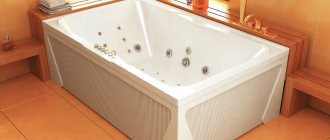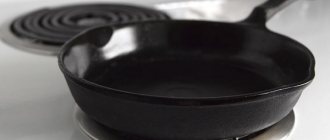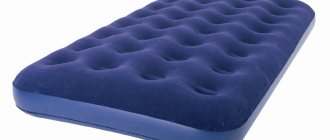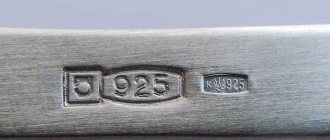The question – how to whiten an acrylic bathtub at home – is one of the top queries in search engines. The beginning of the 21st century at the household level was marked by the massive replacement of cast iron bathtubs. Old cast iron bathtubs were mercilessly thrown away or sold for scrap for pennies. The question of how to bleach an old container was not even raised. Although it was enough to solve the problem - how to whiten a cast-iron bathtub at home, and continue to use the sanitary device.
Marketing research shows an increase in consumer demand for cast iron products. Moreover, their cost has increased. Let's look at an old cast iron container through the eyes of a chemist.
Types of pollution
When deciding how to clean a bathtub at home, they evaluate the degree and characteristics of contamination. The most characteristic of them:
- Plaque from the epithelium washed off from the skin mixed with soap particles. If you make it a rule after each wash to rinse the surface of the bath with hot water and wipe with a sponge, such contamination simply will not occur.
- Plaque from compounds included in soaps, shampoos, gels. It accumulates gradually and gives the enamel a gray tint that is difficult to remove.
- Strong limescale marks are left by salts contained in water with increased hardness.
- Characteristic rusty marks are formed if there is a large amount of iron in the water.
- Yellowing of the enamel is caused by water supplied through worn pipes.
- Black marks at the joints between the bathtub and the tiles indicate the appearance of mold fungus that is dangerous to health.
- Stains of all colors of the rainbow remain when coloring substances - potassium permanganate, hair dye, blue, brilliant green - come into contact with the enamel of the bath.
Tip: If your bathroom is being renovated, you should carefully close the plumbing. This will prevent putty, paint, and glue from getting in.
Types of pollution
There are a number of contaminants that are most often found in the bathroom:
- contamination from soap scum, dirt residues after bathing, washing;
- limescale from water;
- rust, brown spots;
- yellow coating on enamel;
- fungus and mold;
- paint stains;
- education after renovations in the apartment.
Each of these causes requires a different removal method, which uses different chemicals. Considering that modern bathtubs are made of a variety of materials, the task of cleaning becomes even more difficult.
Household chemicals for enamel baths
Ready-made household compositions can be universal or focused on cleaning a specific type of contamination. Read the instructions carefully before use!
How can you whiten the walls and bottom of a bathtub that are covered with a rusty coating? An effective remedy is Sanox. It has an aggressive composition, so it should not be used often.
Using Cilit Bang, we remove rust marks and salt deposits. Cleaning is made easier by using Comet and Ultra White Cif. Liquid Domestos effectively removes not too old stains.
We recommend reading: Removing the smell of urine from the carpet using improvised means - 9 ways
To rid an enamel bathtub of yellowness, wash it with Pemolux and soda, it will return the surfaces to whiteness. But the product is not suitable for frequent use, since it has abrasive properties and leaves micro-scratches on the enamel.
Any chemical compositions are unsafe for the skin and respiratory tract. You should wear gloves when working, ventilate the room, and do not inhale vapors of rapidly evaporating chemicals. When using aggressive chlorine-containing liquids, it is advisable to wear a respirator.
How to get rid of rust
Traces of corrosion eat deep into the material of the plumbing fixtures and are difficult to get rid of. Housewives prefer to use specialized anti-rust compounds. However, even such substances cannot always cope with such a problem. To clean the product from rusty traces, you can use the following instructions:
- You need to take a dry glass jar and pour 100 ml of ammonia into it.
- Then you need to add 50 ml of peroxide to the substance and mix everything thoroughly.
- You need to soak a clean cloth with the prepared mixture and treat the contaminated areas with it.
- A little mixture can be poured onto the rust and left for half an hour.
- The remaining solution is washed off with running water. If necessary, the processing is repeated.
Rust is an oxide of iron. To eliminate it, compositions with alkalis and acids are suitable. In addition, this substance can be effectively removed with vinegar, ammonia and special compounds.
Removing limescale
When wondering how to clean a bathtub at home, it is important to choose products that work well.
We make a mixture of two types of soda - ash and baking soda in equal volumes. Wet the surface of the bath generously. Pour the prepared cleaning agent onto a damp sponge and distribute it over the contaminated areas. After half an hour, treat with a brush and wash the bath.
You can also bleach the bathtub with vinegar (9%), soak paper napkins in it and cover the walls and bottom of the bathtub for 5 hours, and then rinse thoroughly with water.
It is easier to clean the bathtub at home if you use ammonia. Make a solution by adding 10 ml of the product to half a glass of water. Apply, wait 15 minutes, wash off.
Some folk craftsmen have adapted Coca-Cola to combat difficult-to-remove lime deposits: they wash the plumbing fixtures, wetting them generously and keeping them on the surfaces for 7 hours. This type of whitening has proven to be effective.
Here are a few more ways to clean your bathtub from limescale, restoring its whiteness and freshness.
- Mix table vinegar and borax in equal proportions.
- Lightly heat the vinegar (9%), add salt until a mushy consistency is obtained.
- Make a mixture of turpentine and salt in equal parts.
Any of these compositions will effectively clean the bathtub white. We applied and wiped off the limescale with a rag. The stains were gone.
Getting rid of soap scum quickly and easily
The bathroom needs to be cleaned regularly. Soap scum and water sediment always form difficult to remove stains. To remove them, you will have to use chemicals , which not only have a detrimental effect on the surface, but also take money from your wallet. It is best to remove such stains immediately when foam forms. It does not need to be allowed to dry, just rinse with water and wipe the surface dry.
If plaque does form, then you can use chemicals, which are sold in large assortments in specialized stores. If you do not want to spend money on expensive products, then you can use salt, vinegar, soda, citric acid . The simplest method is to use lemon juice. Just squeeze the juice from the lemon into a glass, dilute it 1:1 with water and apply it to a sponge. Wipe areas where soap deposits form and leave for a while, then rinse with warm water.
For an acrylic bathtub you need to use the following composition:
- liquid soap or dishwashing detergent is applied to the sponge and distributed evenly over the surface. After 5–15 minutes, rinse off the applied solution with clean water. Wipe the bathroom with a dry cloth, apply wax and polish;
- For a cast iron bath, you can use acid-containing solutions, but it is worth remembering that their regular use leads to damage to the enamel and its rapid wear. To clean a cast iron bathtub, it is better to use cloth napkins.
The following composition can return a cast-iron bathtub to its original whiteness:
- 2 tbsp. spoons of baking soda, 2 tbsp. calcined spoons, 50 g - bleach, 50 g vinegar;
- All these ingredients are combined and applied to the surface for 10 minutes. Then, rinse thoroughly.
Fighting rusty stains
In the bathroom, attention is paid to all plumbing fixtures. Difficulties arise when rusty marks appear. Among the recommendations on how to clean a bathtub in such a situation, there are many proven and reliable methods.
A solution of ammonia helps; salt mixed with vinegar; lemon juice. Any of these products are kept on surfaces for 15 minutes. They also clean rust with soda ash, to which baking soda is added.
When choosing how to whiten a bathtub at home from rusty stains, mix hydrogen peroxide with alcohol (2:1) and apply the mixture with a sponge for 20 minutes on the desired areas.
We recommend reading: Mold is not allowed in a washing machine. Destroy!
If necessary, remove rust using turpentine. Then pour salt onto the sponge and wipe away the dirt. After this, we clean the residue with detergent and rinse with clean water.
When choosing from an assortment of household chemicals to clean your bathtub from rusty marks, you can purchase Cif or Surzha.
Cleaning Precautions
When bleaching your bathtub, remember the following:
- if you use abrasives or products with metal chips to clean new products, you will most likely damage them, so choose a cleaning product more responsibly;
- when using chlorine-containing products, try to either wear a protective mask or avoid inhaling dangerous fumes from them;
- Some bleaches contain acid to quickly remove plaque and rust. But they, along with such effectiveness, can be dangerous for your hand skin. Therefore, when using them, try to wear rubber gloves.
As you can see, it is quite possible to whiten and clean a bathtub from rust or plaque at home using both chemical cleaning products and improvised devices. And at the same time, it is very important to choose the right cleaning agent so as not to spoil the surface of the structure. If everything is done correctly, your bathtub will serve you for many years and even more than one decade.
Traditional methods in the fight against mold
We'll tell you how to clean mold from a bathtub using substances available in every home.
To wash away traces of mold characteristic of the bathroom, take activated carbon tablets, grind them and mix with “Whiteness” until a pasty mass forms. Place it on the fungus-affected areas for an hour, and then thoroughly wash the surfaces using an old toothbrush.
In horizontal areas, soda is used to wash moldy areas, sprinkled in a layer of 0.5 cm. Table vinegar is carefully poured on top. When the reaction is over, treat the surfaces with a sponge and soapy water, removing any remaining dirt, and rinse with water.
What are the types of bath stains?
The surface of the bathtub can change its color for various reasons. The most common of them:
- Soap residue. It is formed when using gels, foam, shampoo and other hygiene products. During the washing process, they are removed from the body along with dirt and dead skin particles. As a result, a thick, dirty coating forms on the bathtub, which darkens over time.
- Yellowness. This problem is associated with the formation of rust. Its particles penetrate into the water supply through old pipes. Gradually, the drips become more pronounced, penetrating into the structure of the construction material.
- Lime deposits. Calcium salts often settle on taps, tiles and bathtubs. When in contact with soap, they form whitish stains on the surface of plumbing fixtures. In addition, limescale deposits are often caused by hard tap water.
If the bathtub is acrylic
The coating is innovative, we also choose modern products.
Store-bought drugs
Cif copes well with rust stains - a universal product suitable for various materials. Acrilan is specifically adapted to acrylic surfaces and has good cleaning properties in removing rust, lime and other deposits.
And also an effective household product suitable for acrylic bathtub surfaces is liquid BASS. You can use low-aggressive cleaning products Triton, Sun Clean, Mister Chister.
Folk remedies
When choosing options for how to clean an acrylic bathtub, people often turn to folk wisdom.
A solution of citric acid (half a sachet per liter of water) will solve the problem of how to make a bath snow-white by removing lime deposits. They cover all surfaces for 20 minutes. Clean stains with a sponge. Wash it off.
Light deposits are best cleaned with baking soda.
In case of ingrained yellowness and the presence of old extensive stains of rust, make a mixture of soda ash and baking soda in equal parts. Distribute it over problem areas. After 20 minutes, mix vinegar (9%) with bleach and spread over the previous layer. Wash off after 30 minutes. Author: channel on youtube.com - USEFUL TIPS MIX
Sometimes you need to quickly decide what to use to clean the bathtub in order to remove the yellowness. Good results are shown by toothpaste, a layer of which should be left on the stain for 15 minutes before being washed off.
We recommend reading: How to remove mold in an apartment, house or country house
For small fresh stains, clean the acrylic coating with fine salt and added water until it becomes pasty.
When cleaning an acrylic bathtub by any means, do not use hard brushes or coarse abrasive powders. Avoid aggressive compounds.
Traditional methods
Folk cleaning products can help save the family budget, as well as enhance the effect of household chemicals in cases of very heavy contamination. In addition, folk remedies are good because they are less aggressive than store-bought ones, but at the same time they are just as effective in removing plaque and rust. Let's figure out how to whiten an old yellowed bathtub using traditional methods.
Baking soda
Simple table soda is unlikely to remove old limescale deposits. But soda will remove fresh dirt that has recently appeared on the surface of the bath easily and quickly. A small amount of powder should be sprinkled on the problem area, then gently rub the surface with the soft side of a damp sponge. After the procedure, you should wash off the remaining soda with warm water from the shower.
Soda Ash
Combine soda ash and table soda in equal proportions. Moisten the bath and apply the product to the surface for 30 minutes. Apply table vinegar to the soft side of the sponge and carefully treat the contaminated areas. After another half hour, rinse off any remaining product with warm water. Dry the bathtub with a dry cloth made of soft material.
Vinegar
Ordinary table vinegar can remove not only limescale and soap deposits, but also traces of rust. To do this, you need to soak paper napkins or towels in vinegar, lay them over the entire area of the bathtub and leave in this position for 5-6 hours. After the allotted time, the bathtub will only need to be rinsed with warm water from the shower.
Lemon acid
Lemon juice or citric acid can remove limescale from the bathtub. Instructions for use:
- Dilute 2 packets of acid in two glasses of warm water.
- Transfer the resulting solution to the soft side of a kitchen sponge.
- Use gentle movements to treat contaminated areas of the bathtub surface.
- After half an hour, wipe the bath.
- Rinse off the remaining solution with warm water from the shower.
Important! Citric acid is an excellent assistant in whitening acrylic bathtubs.
Oxalic acid
A good way to remove strong rust stains using the folk method. To do this, you need to mix the acid and water until you get the consistency of sour cream. Apply the resulting mixture to the problem area for 45 minutes, then treat the area with powder and a sponge. Next, after drying and degreasing the surface, nitro enamel is applied.
Important! The method is only suitable for metal enameled bathtubs.
Turpentine and salt
This method should not be used for acrylic bathtubs, as abrasive salt crystals can scratch the delicate coating. Procedure:
- Mix together turpentine (1 tablespoon) and salt (2 tablespoons).
- Transfer the resulting solution to the problem area of the bath.
- Leave it like this for 15-20 minutes.
- Gently rub with a sponge and rinse off any remaining solution with warm water.
Whiteness and bleach
The method is not intended for removing heavy stains, but is great for refreshing a slightly dirty bath. Procedure:
- Fill the bathtub with hot water.
- Pour 2 packs of bleach or 1 bottle of bleach into the water.
- Leave it like this for 4-5 hours or overnight.
- Drain the water and rinse the bathtub to remove any remaining product with running water.
The bath should be completely transformed.
Peroxide and ammonia
The solution works great to whiten enamel bathtubs. Procedure:
- Mix ammonia and hydrogen peroxide in proportions 2:1.
- Apply the resulting product to a sponge and treat the surface of the bath.
- After 30-45 minutes, rinse off any remaining product with cool water from the shower.
Melamine sponge
Melamine, which the sponge is made of, is colorless crystals that are slightly soluble in water. Thanks to its special structure, the melamine sponge acts like an eraser and is capable of removing not only limescale deposits, but also marks from a pen or felt-tip pen from any hard surface.
Cleaning an old bathtub
In old buildings, information is relevant on how to bleach an old bathtub, the surfaces of which have turned yellow from persistent deposits. Tips from the people's piggy bank will come in handy.
In the evening, fill the old bathtub to the top with warm water. Pour in a glass of vinegar essence. In the morning, the water is drained and the bath is rinsed with a shower.
When choosing a method for cleaning a bathtub from rusty streaks, take soda, moisten it, and add liquid soap. Using a medium-hard brush, treat contaminated areas.
It’s even better to use ammonia to clean an old bathtub from stubborn, old stains. Three tablespoons are poured into half a glass of liquid soap, mixed and distributed with a sponge over the inner surfaces of the bath, leaving for 20 minutes.
How to whiten an old cast iron bathtub
As we have already said, bathtubs made of different materials have their own characteristics in terms of cleaning the surface. And cleaning an old cast iron bathtub that is covered with small cracks and a thick layer of plaque is actually not as difficult as it might seem. And for cleaning, you can choose any cleaning powder, because the old bathtub is no longer afraid of anything.
Although for complete bleaching of a cast-iron bathtub it is better to use the following devices:
- “Whiteness” product;
- sponge with a dense hard surface;
- metal brush;
- abrasive agent.
By using a wire brush, the powder will penetrate into all the cracks. At the same time, it must be applied as liberally as possible . For cleaning, you can buy the cheapest product, since you will need a lot of it.
Before work, you need to moisten the bathtub with water, then scatter the powder over it and wait about 15 minutes. After that, walk with a metal brush over its entire area. Very often, after such a procedure, not a trace of rust remains, and the bathtub acquires its original shade.
The baking soda we talked about earlier is also good for whitening an old cast iron bathtub. Soda is generally a universal cleaning agent for different types of surfaces, including metal.
Before applying to the surface, soda must be diluted in water and stirred until a paste is obtained. Apply the resulting mixture to the surface and wait until it hardens slightly. Remove it after a while with a sponge.
Daily bath care
If you follow a number of simple care rules, you will be able to maintain the original appearance of this plumbing fixture for a long time.
You can avoid the accumulation of contaminants in the form of lime deposits, rust stains, yellowing or fungal growth by regularly washing the bathtub with a soft sponge and liquid soap.
After taking a bath, you should immediately wipe the surfaces with a dry cloth: this will eliminate the main cause of persistent stains - prolonged contact of internal surfaces with moisture.
If you know how to make a bathtub snow-white and follow simple maintenance rules, you can use it for many years, saving your family budget, since you don’t have to buy new plumbing fixtures.
What can you do to clean your bathtub less often?
If you use your bathroom correctly, you will have to clean it much less often. With careful care, the bathtub will retain its original whiteness longer.
Bathroom care tips:
- after water procedures, it is advisable to wipe the bath with a dry cloth, then limescale will not be deposited on it;
- To prevent rust from forming in the bathtub, it is necessary to promptly repair faulty taps and showers from which water is constantly dripping;
- Sudden changes in the temperature of the water in the bath should not be allowed;
- Do not clean the bathtub with metal brushes or abrasives;
- It is not recommended to place metal basins and buckets in the bathtub, which can scratch the bathtub;
- It is necessary to ensure that the bath cleaning products are suitable for this type of bath.
There are several useful recipes for cleaning your bathtub using home remedies..
The Best Store-Bought Cleaning Products
Specialized household chemicals contain effective reagents, microelements and substances that work well against various types of stains to which enamel is prone.
There are many cleaning products on the market with paste, gel, and powder consistency. Before buying any of them, you need to check whether it is suitable for enamel, study the instructions and become familiar with the composition.
Let's consider several effective means that have worked well in practice and are most popular among housewives.
The most commonly used product used to clean cast iron bathtubs is plain white. It is inexpensive, produced by numerous manufacturers, but regardless of this, it has an almost identical composition.
The average cost of a 1 liter bottle is 50-80 rubles. The product is available in gel and liquid form. The first option will cost an order of magnitude more.
Whiteness helps restore the original color of the coating, removes grease, fresh paint stains, destroys bacteria, mold, and mildew thanks to its powerful disinfecting and disinfecting properties.
However, it is not suitable for emergency resuscitation of the coating: it is unlikely that it will be possible to remove either rust or limescale deposits. In addition to the enamel itself, it is recommended to clean the tiles in the bathroom, joints, corners located above the bowl, and drain areas with the substance.
It is necessary to wash the container with whiteness with a moderately hard sponge without metal fibers. It is advisable to use it not in its pure form, but to dilute it with ordinary water, maintaining a 1:2 ratio. You can also add 100 ml of the mixture to a bath filled with liquid, mix well and leave overnight.
Cleaning composition of the famous brand MR. MUSCLE is also suitable for more serious stains. Unlike white, it is much easier to use. It does not contain aggressive components, so it is used in its pure form.
The operation process itself is made easier thanks to the convenient sprayer. The average price for a 0.5 liter bottle is about 220 rubles.
Mister Muscle is an excellent option for disinfection, care, and treatment of damaged surfaces. A spray with a creamy formula penetrates deeply into the structure of the stain, completely destroying it in a short time
The substances included in its composition effectively clean the enamel from existing rust and, subject to regular, correct use, prevent corrosion. The product copes well with lime deposits, soap scum, dirt deposits, and kills all kinds of microbes.
The cylinder is used in two modes, which are changed by turning the spray tip. The first mode is intended for application over a large area, the second - for spot treatment of narrow crevices.
After use, wipe the coating with a sponge and rinse off the composition with plenty of water. If necessary, the procedure is repeated several times.
Comet gel is a universal product for cleaning various types of coatings on plumbing fixtures. It is available in several versions - “Up to 7 days of cleanliness”, “Expert”.
The last of them - Expert - is endowed with a stronger composition designed to work with limescale and rust. The average price of a plastic container with a 0.5 liter dispenser is 150-200 rubles.
The product gives a slight whitening effect, serves as an excellent disinfectant, breaks down fatty deposits, and removes stubborn stains. The composition does not contain silicate abrasive, so it does not scratch the enamel coating
To clean the bathtub from rust, apply the gel and leave it on the problem area for 10 minutes. After this, you need to wipe the bowl with a sponge and rinse with running water. It is not recommended to leave the product on the surface of the bowl for more than 10 minutes, as it contains acids.
We suggest you read: How to keep cut roses in a vase fresh for a long time?
Under the Cif brand they produce several effective products specializing in cleaning tiles, pipes and plumbing.
For the enamel coating of cast iron bathtubs, anti-plaque bath spray, Active Fresh universal cream, Power{amp}amp;Shine bath spray, Ultra White cream with a whitening effect are suitable. You can buy cream for an average of 100-150 rubles, spray – 150-200 rubles. The volume of the plastic container is 0.5 l.
All solutions and creams from SIF eliminate unpleasant odors well and aromatize the room thanks to the various fragrances that are included in their composition. Depending on the form of release, there are lemon, pine, eucalyptus, and sea flavors
The products can be used to remove grease and lime deposits. To clean the surface from mold and stubborn rust, it is better to take a reinforced cream with a whitening effect.
The drug is applied to the coating for up to 15 minutes. Its active substances instantly penetrate deep layers of contaminants and damage their structure.
As a result, the stubborn stain turns into a trickle of liquid, which can be easily removed with a sponge. After all manipulations, you should thoroughly rinse the bath bowl with running water.
Sanox is called the “heavy artillery” among all similar products. The powerful composition of the mixture and the high concentration of active components allows you to easily deal with even very complex stains. A 0.5 liter product specially designed for cleaning bathtubs costs about 50 rubles.
Sanox quickly eliminates unpleasant odors, removes 99% of bacteria and infectious agents from the surface of the bowl, corrodes grease, limescale, and rust. The method of using the drug is practically no different from the previous ones. It is applied to the contaminated area, left for 10 minutes, rubbed with a sponge and washed off with water.
It is worth considering that the liquid contains acids, so it must be used with extreme caution and in extreme cases when stubborn stains do not respond to other drugs.
If the enamel does not have an acid-resistant coating or is too thin, it is better to choose other, more gentle means.
Products from the Frosch line are an ideal option for regular cleaning of enamel and preventing the formation of difficult-to-remove plaque.
They are easy to apply and wash off, have an absolutely safe composition, a convenient spray form, and a pleasant aroma. The average cost of a 0.5 liter spray bottle is 250-300 rubles.
Frosch spray helps maintain the enamel coating of a cast iron bathtub in excellent condition, without resorting to emergency and harsh methods of surface resuscitation
Using an eco-friendly product, you can remove shallow stains from rust and limescale, but it is not suitable for heavily soiled areas.
If the bathtub has already become dirty, then before cleaning and bleaching it, first remove rust and roughness. Available tools and current methods will help with this and are described below. Make one of the suggested mixtures and wipe the rust stain with a soft cloth. Leave the solution for 20 minutes and rinse with running water.
- Combine table salt (100 g) and turpentine (35 ml).
- Mix wine vinegar (100 ml) and table salt (2 tbsp). Heat the mixture to 65 degrees.
- Pour hydrogen peroxide (50 g) into ammonia (100 g) and shake the solution.
After removing the rust, bleach individual old yellow areas using the following method.
- Make a solution of ammonia and hydrogen peroxide in a one to one ratio.
- Using a sponge, rub the mixture into the bath bowl and leave for 40 minutes.
- Pour water, add 0.5 liters of bite and leave for 20 minutes.
- Rinse well with clean water.
Give the sanitary fixture a white and glossy shine and clean the surface of the bowl using one of the following steps.
- Pour warm water into the bath.
- Pour in 200 ml of vinegar essence (a small concentration is harmless to the coating) or 100 ml of whiteness.
- Stir and leave for 3 hours, or preferably overnight.
- Drain the water and rinse the bathtub with clean water.
Another way to restore and whiten damaged coating.
- Pour soapy water or alkaline-based detergent into the bottom of the bowl.
- Using a sponge, starting from the bottom, thoroughly clean the inside of the bowl.
- Leave the detergent for 5-10 minutes to interact with the dirt and rinse the bathtub with running water.
After cleaning the bathtub, do not forget to dry the enamel. To do this, open the bathroom door or dry the surface with a soft flannel cloth. At the same time, when using any of the chosen methods, do not forget about your own health: protect the skin of your hands and nails (use rubber gloves), as well as your respiratory system (wear a gauze bandage and leave the door ajar).
As you can see, if you do not install new plumbing, you can extend its service life for a long time, and if you have already encountered problems with an enameled cast-iron bathtub, then you can solve this problem using folk remedies.
I suggest watching videos on how to clean a cast-iron bathtub from plaque at home?
How to clean old rust in the bathroom?
Detergents
It is believed that acrylic bathtubs have a powerful self-cleaning effect, since their smooth surface repels dirt, so they are washed with ordinary water. To clean plumbing fixtures made from other materials, you have to use special products. They differ in composition, degree of aggressiveness, and method of application. The following products are used for cleaning and bleaching bathtubs:
- Chemical. Modern acid- and alkaline-based detergents have a fairly aggressive composition, so they effectively fight limescale, yellowing and microorganisms. Cast iron and acrylic bathtubs are washed with different compositions so as not to damage the surface of the product.
- Abrasive. The composition of abrasive detergents includes solid particles of a small fraction, due to the impact of which the surface of the bath is cleaned. They effectively fight dirt, however, they leave scratches on acrylic.
Separately, it is necessary to highlight folk remedies for bleaching washing containers made of cast iron and steel. Every housewife knows several available methods for cleaning plumbing fixtures using soda, vinegar, oxalic acid and ammonia. Traditional anti-pollution methods are great for people with sensitive skin, allergies and families with small children, as these household products are completely safe for their health.











